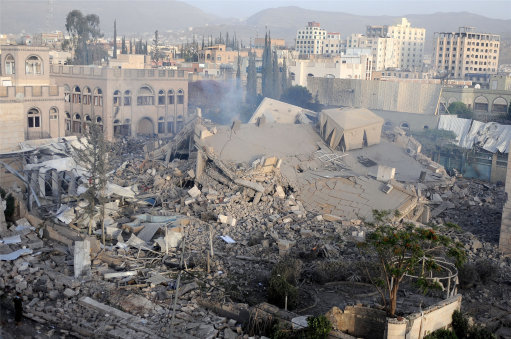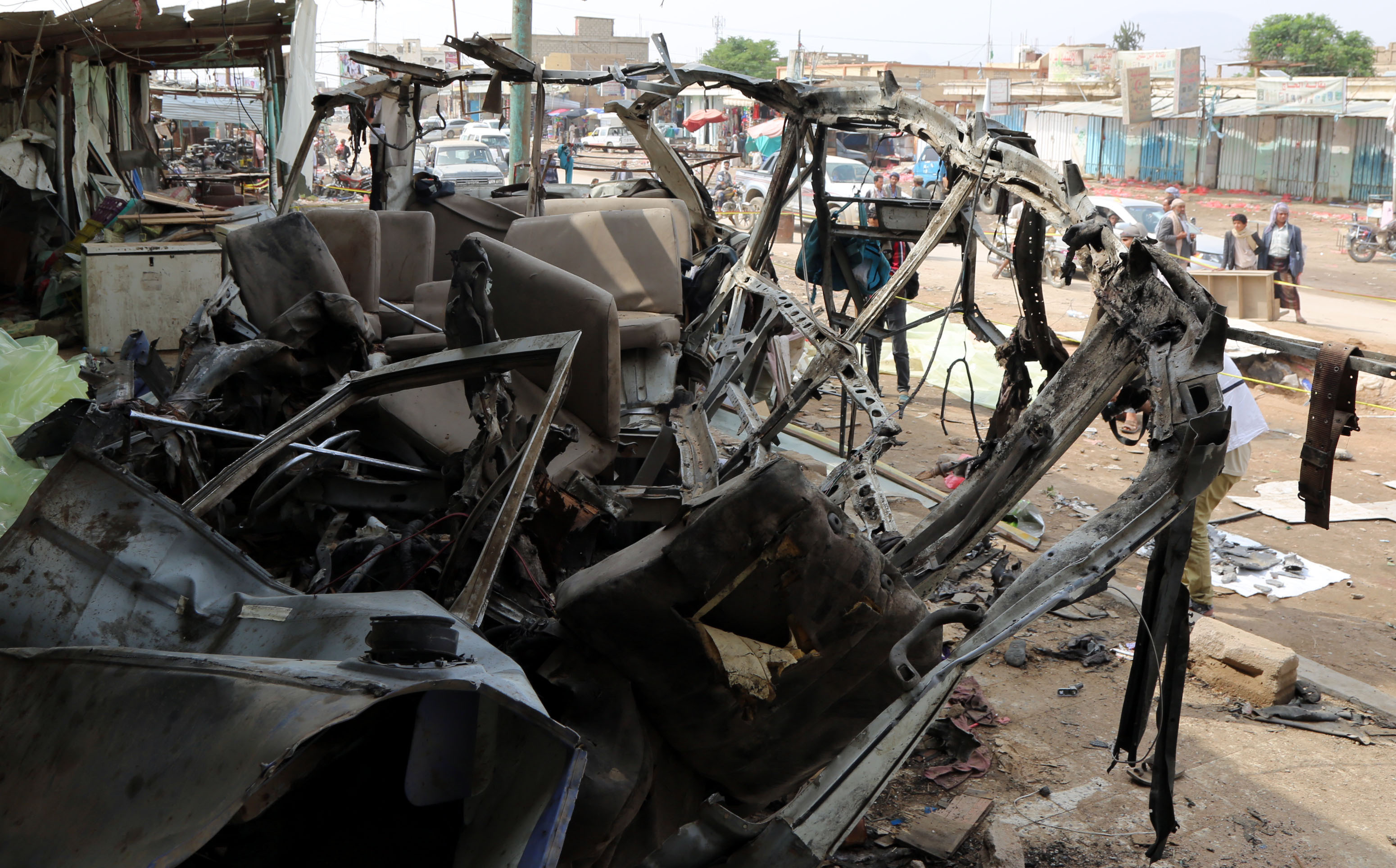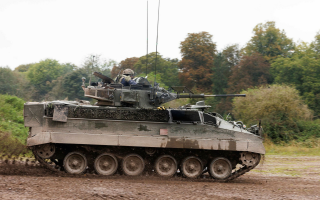
Yemen Truce Discussions Continue Between Warring Parties

Sanaa Yemen after airstrikes by Saudi-led coalition forces (Picture: PA)
Delegations from Yemen's warring sides have discussed expanding a truce in the port city of Hodeida.
However neither side appeared ready to agree on initial draft proposals hoped for by the United Nations, who are sponsoring talks in Sweden and seek to resume needed aid deliveries by sea.
One draft document showed an initial 16-point proposal to stop all fighting and have all troops withdraw to the city limits and later outside the province while allowing UN oversight and setting up a local, pre-war administration.
Representatives from both sides mentioned only preliminary proposals that were not accepted.
The talks, held in a castle outside Stockholm, have so far focused on implementing a broad prisoner swap between representatives from Yemen's Iran-backed Houthi rebels and the internationally recognised government supported by the US and a Saudi-led coalition.
They met for a fifth day on Monday.

"As always, in any round of talks, ideas are brought forward, and they could be preliminary, they could have just been thrown out on the table," said Ali Hussein Ashal from the government delegation.
"And a lot of the ideas which have been brought forward previously, in other rounds of talks, the Houthis have refused many of them."
Earlier rebel delegation member Gamal Amer said that his side had rejected a proposal, although it was unclear if it was the same one or if multiple drafts existed.
He said only that the rebels had submitted "substantive observations" about it.
A similar draft document circulated outlining a gradual drawdown of the conflict in the central city of Taiz.
United Nations special envoy Martin Griffiths has said he wants to "take Hodeida out of the war", in hopes that international aid delivers can be restored through the port and the country can avert famine.
Meanwhile Mark Lowcock, UN humanitarian chief, has warned 20 million people in Yemen are hungry - 70% of the population and a 15% increase from last year - and for the first time 250,000 are facing "catastrophe".
Mr Lowcock, who recently returned from Yemen, told reporters there has been "a significant, dramatic deterioration" of the humanitarian situation and "it's alarming".

He said that for the first time, 250,000 Yemenis are in Phase 5 on the global scale for classifying the severity and magnitude of food insecurity and malnutrition - the severest level, defined as people facing "starvation, death and destitution".
Mr Lowcock, the UN undersecretary-general for humanitarian affairs, said the 250,000 Yemenis facing "catastrophe" are overwhelmingly concentrated in four provinces "where the conflict is raging quite intensely" - Taiz, Saada, Hajja and Hodeida.
The only other country where anyone is in Phase 5 is South Sudan, with 25,000 people affected, he added.
Mr Lowcock said there are nearly five million Yemenis in Phase 4, defined as the "emergency" level, in which people suffer from severe hunger and "very high acute malnutrition and excess mortality" or an extreme loss of income that will lead to severe food shortages.
He said these people live in 152 of Yemen's 333 districts, a sharp increase from 107 districts last year.
Large numbers of people "have moved into a worse category of food insecurity" as a result of the war, Mr Lowcock said.









